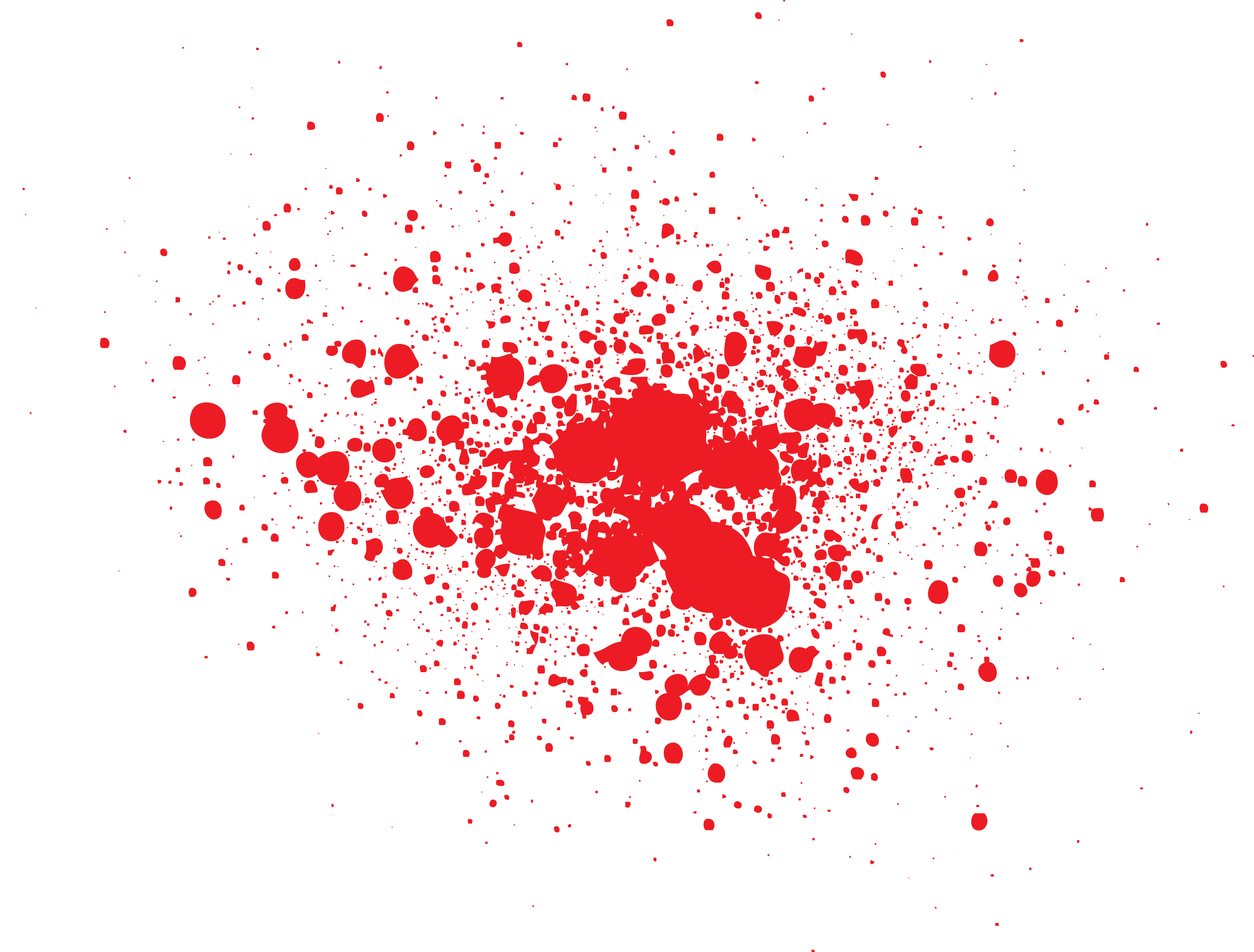Introduction:

Within this web-site there will be images that
could be seen as disturbing. If blood makes
you uncomfortable then I would suggest seeking out
another page. If you do not mind it so much
keep the following in mind:
Limitations:

I am by no means a forensic scientist.
While much of the information that I have used comes
from experts in the field of physics, forensic
analysis, and specifically blood stain pattern
analysts, I cannot claim such expertise. Every
calculation, experiment, and equation comes with an
inherent chance of error from many different
sources. I do not know these error values are
not explained in this website. You can find
all sources that I use in the Bibliography.
Content:

|
Blood Spatter Analysis is a
discipline where a specially trained scientist
looks at the blood
stains, such as the one imaged to the the left,
and determines information such as what caused
the stain. For example they can find if
the stain was caused by a gunshot, stabbing,
slicing, or blunt force trauma. Just as
importantly they can find the position of the
person that is bleeding. They are highly
valued in violent cases in court.
|

|
In recent years we have been
privileged to a great many sources of watchable
media that has depicted a blood spatter analyst
at work. While dramatized to make the show
or movie more interesting, shows like CSI and
Dexter (Shown at left) have allowed us to peer
into some of the methods of these professionals.
|

|
In 1895, the first study on
bloodstain patterns was published. It was
conducted by Dr. Eduard Piotrowski of Poland and
spurred investigators in Europe to further
develop his findings. It wouldn't be until
1955 when blood spatter analysis would be used
in an American legal case in Ohio v. Samuel
Sheppard. In the case, the blood showed
where the accused was standing and with which
hand the victim was stabbed with, which was not
the primary hand of Sheppard.
|
|
|